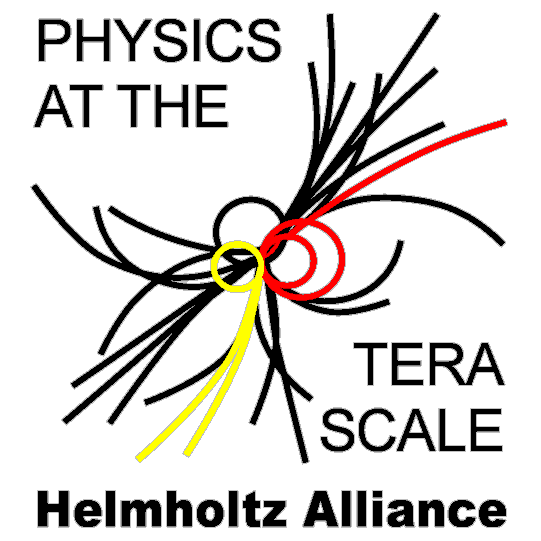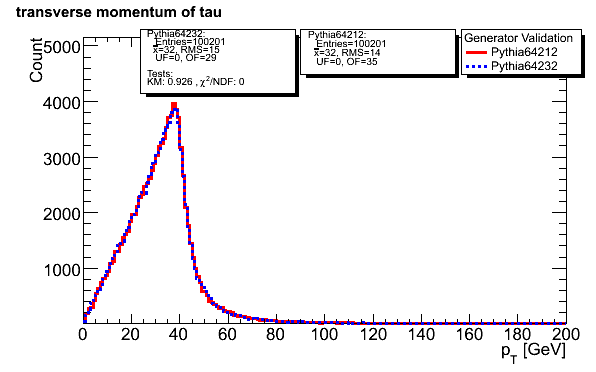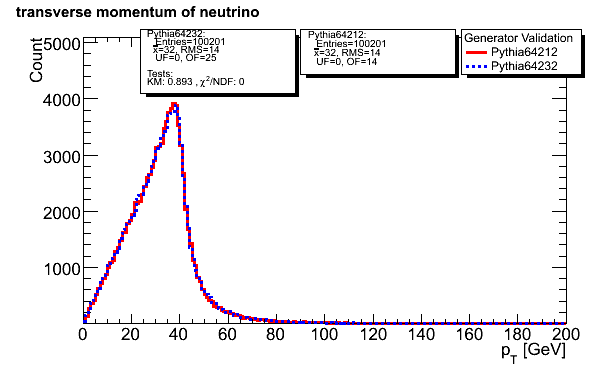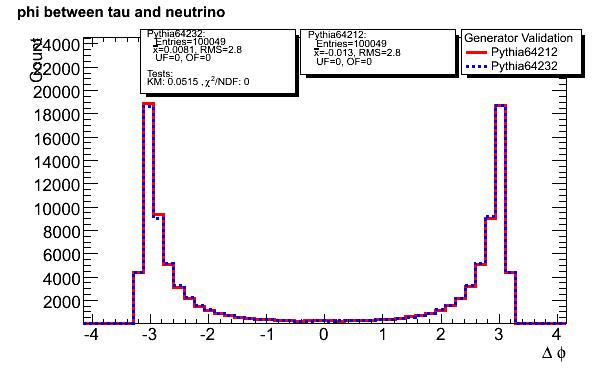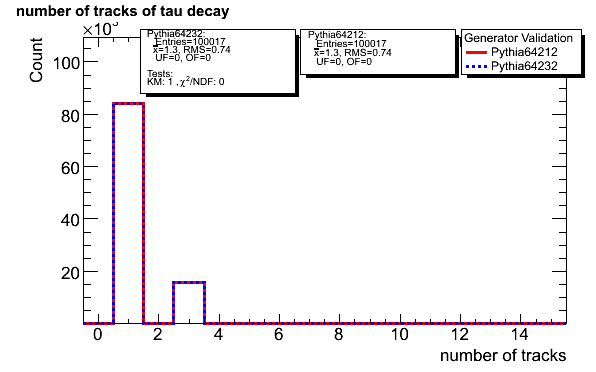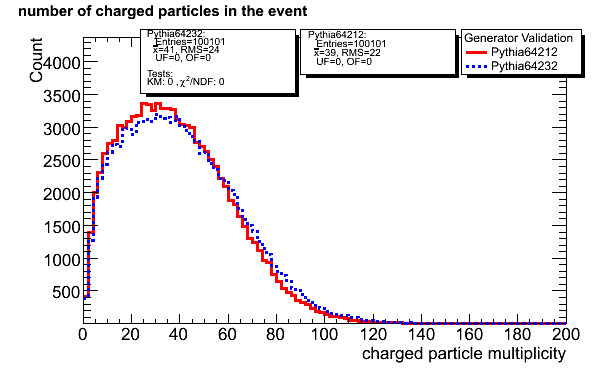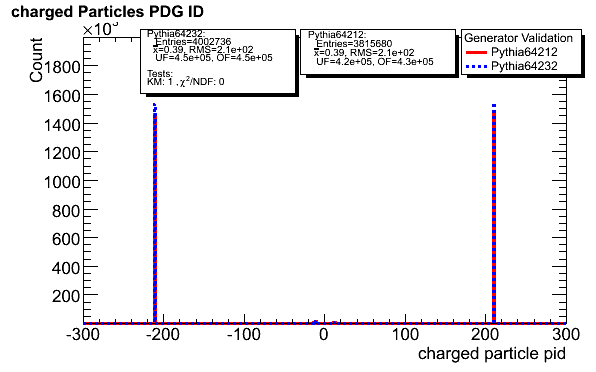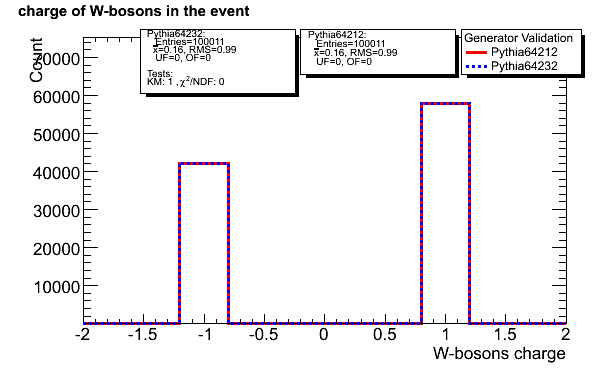
It can be extracted from the plot that more W-bosons with a positive charge are produced. This behaviour is due to the fact, that the W+-boson can be produced from an up-type quark and an anti down-type quark, whereas the W--boson can be produced from a down-type quark and an anti up-type quark.
The considered process is the collision of two protons, which contain each two up and one down valence quarks. Therefore the possibility that an up quark interacts is two times higher than the interaction of a down quark. Furthermore the parton distribution function of the anti-down quark is slightly higher than the one of the anti-u-quark
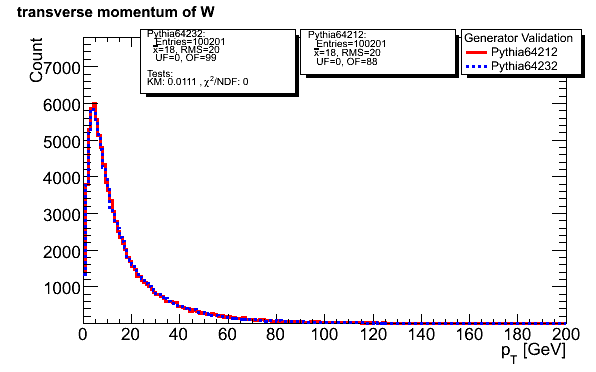
The W-boson carries only a small transverse momentum because of its high mass. It is almost produced at rest and decays after a short time into the &tau -lepton and the neutrino.
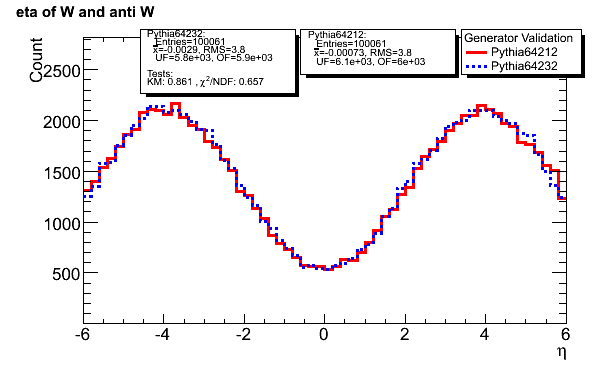
The direction of the W-boson can also be determined of the pseudorapidity, which is defined as
&eta=-ln[tan(&theta/2)].
If the W-boson is produced perpendicular to the beam axis, &theta=90°, the pseudorapidity becomes &eta=0. A large pseudorapidity implies a vanishing angle &theta. The pseudorapidity is symmetric with respect to the beam-axis.

